By Michael D. Hull
Forty-eight Wright Cyclone aero engines coughed into life on the hardstands at windswept Polebrook Airfield in Northamptonshire, England, early on the afternoon of Monday, August 17, 1942.
Ground crews made final checks on the dozen Boeing B-17E Flying Fortress four-engine heavy bombers of Colonel Frank A. Armstrong Jr.’s 97th Bombardment Group of the U.S. Eighth Bomber Command, and the engines’ roar grew to a thunderous crescendo. In the briefing hut, tension mounted as young pilots, navigators, bombardiers, and gunners listened to last-minute instructions. They were finally going into action.
The group had been activated on February 3, 1942, at MacDill Air Base in Tampa, Florida. It trained there and started its overseas movement on May 15; the first Fortress arrived in England on July 1.
Three days later, in celebration of Independence Day, a dozen Douglas A-20 medium bombers of the Eighth Air Force’s 15th Bombardment Squadron took part in the first strike against Nazi-occupied Europe involving American bombers. Attached to No. 226 Squadron of the Royal Air Force and escorted by Supermarine Spitfire fighters, the A-20s hit German airfields in Holland.
Now, 18 Fortresses out of two dozen available were readied for the first all-American bomber raid on Europe. A target had been selected and the operational machinery set in motion. It would be the prelude to an American aerial offensive complementing the nightly campaign of RAF Bomber Command.
On August 5, 1942, Brig. Gen. Ira C. Eaker, the 47-year-old, Texas-born commander of the Eighth Bomber Command, and General Carl “Tooey” Spaatz, first commander of the Eighth Air Force, had gone to the London headquarters of Lt. Gen. Dwight D. Eisenhower, newly appointed commander of the U.S. European Theater of Operations, and presented a plan for their first bombing mission. Ike, who had visited Polebrook, the first B-17 base in England that July, quickly approved the plan. But the unpredictable English weather intervened, and two planned missions were canceled.
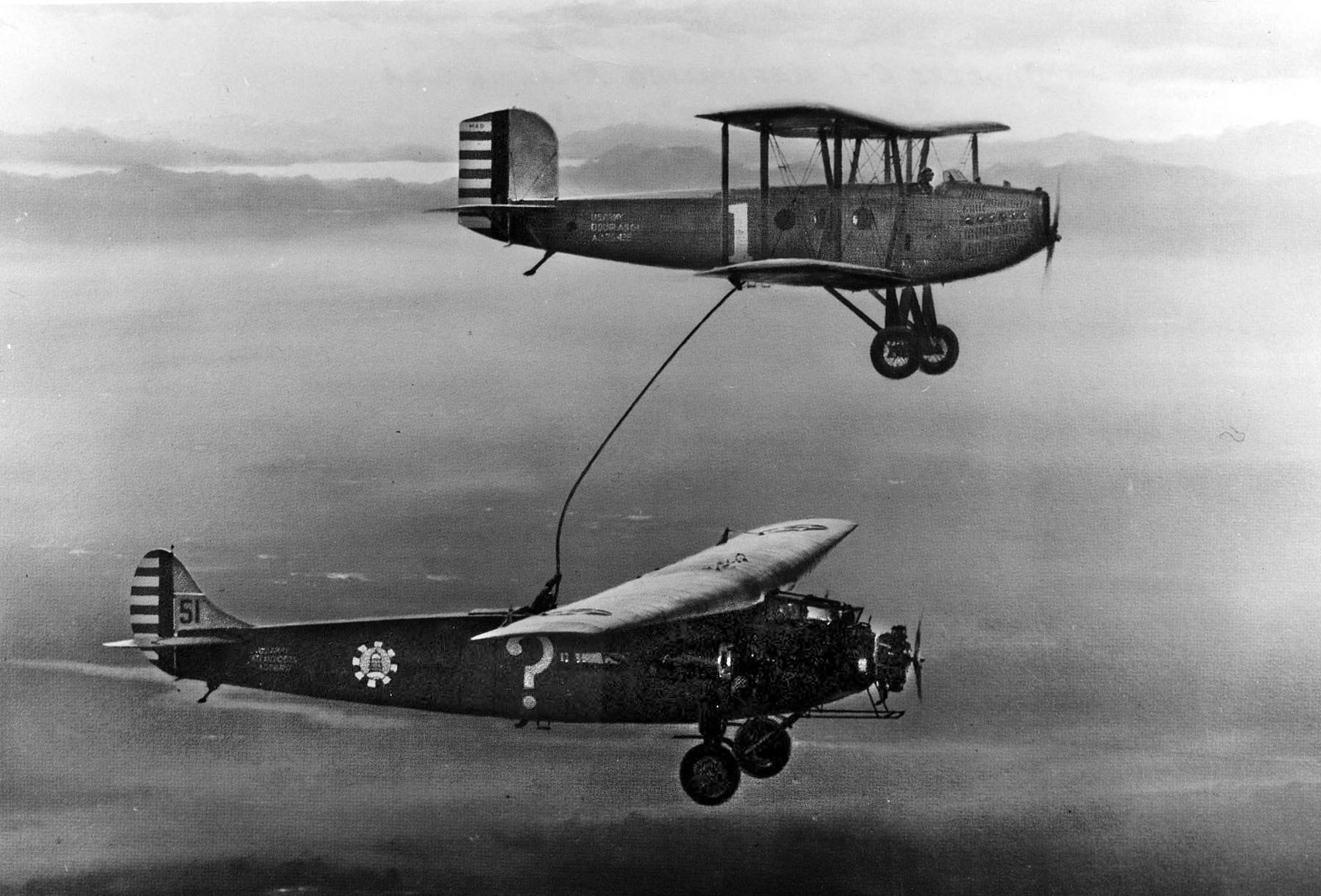
Eaker, the advance man for the Eighth Air Force and commander of Eighth Bomber Command, had built his command from scratch. When he and half a dozen officers arrived in England early in February 1942, they had no aircraft and no equipment—not even office paper clips—beyond what the British Air Ministry supplied them. Now, though still woefully short of planes and crews, the Eighth Bomber Command was ready and eager. On August 14, General Spaatz received a brusque cable from General Arnold demanding to know why the B-17s were still idle. Finally, the 97th Bomb Group was alerted for a third time on the evening of August 16. The weather cleared, and held.
The target would be the railroad marshaling yards at Sotteville, near Rouen in northern France, 65 miles northwest of Paris. The objective was only 35 miles inland from the English Channel and well within the range of the RAF Spitfires assigned to escort the dozen B-17s. The group’s six other Fortresses were to make a diversionary sweep along the French coast to lure German Luftwaffe fighters away from the Rouen area. Despite heroic prewar service in record-breaking endurance flights, Eaker had never been in action, so he announced that he would go along on the first B-17 mission.
After his operations conference on the morning of August 17, Eaker flew to Polebrook, where he told Colonel Armstrong and his men that he would be flying with them. The general was impressed by “the nonchalance of the crews” and their “evident enthusiasm.”
Waiting at dispersal points on the Polebrook runways were camouflaged Flying Fortresses with colorful names painted on their noses: Yankee Doodle, Peggy D., Big Stuff, Baby Doll, Alabama Exterminator, Birmingham Blitz-krieg, Berlin Sleeper…. After donning flying suits, Colonel Armstrong and the crews rode trucks out to the planes and hoisted themselves aboard. General Eaker, the former fighter pilot who had become a fully committed advocate of bombing strategy, clambered into the 414th Squadron’s Yankee Doodle as an observer. In the pilot’s seat was Armstrong, who would later become the model for the hard-bitten, resolute General Frank Savage in the best-selling novel and 1949 film classic Twelve O’Clock High. Armstrong’s co-pilot for the August 17, 1942, mission was boyish Major Paul W. Tibbets, who would make history three years later at the controls of the Boeing B-29 Superfortress Enola Gay when it dropped the first atomic bomb on Hiroshima, Japan.
General Eaker sat in the radio operator’s compartment aboard Yankee Doodle, hoping and praying that the operation would succeed. The formation thundered across the English Channel.
All was going well as the American bombers neared their target. No enemy fighters had been seen, and only a few desultory bursts of antiaircraft fire had peppered two planes. Over the village of Sotteville, three miles north of Rouen, the bombardiers toggled their loads loose. Eaker scrambled to a side window to watch Yankee Doodle’s five 600-pound bombs go down in a string directly over the Sotteville rail yards. The Fortresses dropped a total of 18-and-a-half tons of bombs that afternoon, damaging a roundhouse, the marshaling yard, siding tracks, railroad cars, sheds, and a workshop.
Shortly after the bombers pulled away from the target area, three Luftwaffe Focke-Wulf 190 fighters swung up to harass them. The B-17 gunners drove them off. As Colonel Armstrong’s force headed back to the English Channel, Eaker looked out the radio operator’s window and counted the planes. All 12 were still in formation, with one lagging slightly and trailing smoke from its left outboard engine. Five squadrons of clipped-wing Spitfire Vs now joined the Fortresses.
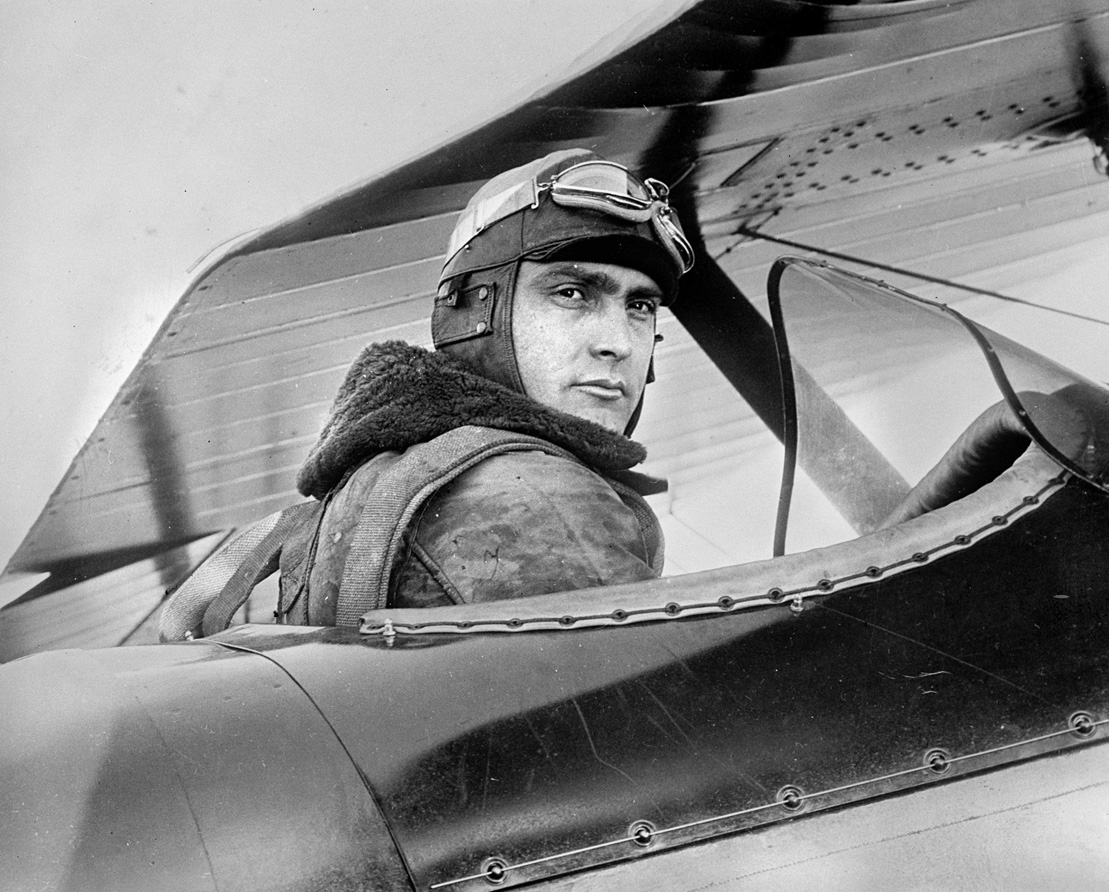
General Eaker and Armstrong were elated. Their inexperienced crews had hit the target with no losses and only slight damage. The only casualties were a bombardier and navigator in the six-plane diversionary force. The pair suffered superficial cuts when a flock of pigeons shattered the nose of a B-17 heading back to the 97th Bomb Group’s satellite airfield at Grafton Underwood in Northamptonshire. Meanwhile, Armstrong’s formation crossed the English coast and steered for its home base. The August 17 raid was a promising start, front-paged in the London newspapers and lauded by the hard-pressed British.
In a report to General Spaatz, Eaker praised the Fortress and the first combat crews. “I think it is a great airplane” with “excellent defensive firepower,” he said. “It is too early in our experiments in actual operations to say that it (the B-17) can definitely make deep penetrations without fighter escort and without excessive losses. I can definitely say, however, that it is my view that the German fighters are going to attack it very gingerly.” The crews, he told Spaatz, were alert, though in need of more formation and gunnery training.
The American raids continued, with Eaker’s crews gaining valuable experience and all planes returning safely to base. Nine missions were flown before a B-17 fell to German gunfire. Nevertheless, hardship and sacrifice awaited General Eaker and his crews as the Eighth Air Force sortied farther across Europe. Losses mounted, crews grew increasingly tired and dispirited, and morale was strained severely. At great cost, the American airmen were learning what the British and the Germans already knew.
Harris and other British air leaders counseled against unescorted daylight raids, and Prime Minister Winston Churchill tried to talk Eaker out of the strategy. The British did not interfere officially; it was thought advisable to let their allies learn from their own lessons.
Generals Spaatz and Eaker, supported by Arnold, adhered stoutly to the doctrine of daylight bombing. Eaker’s bomber groups suffered heavy losses in unescorted daylight raids against Schweinfurt, Regensburg, and other targets, but the situation improved dramatically later in 1943 with the deployment of long-range North American P-51 Mustang fighter escorts.
General Eaker was awarded the Silver Star in 1942 for commanding and participating in raids, and the following year he received the Legion of Merit for his “exceptionally meritorious conduct.”
Ira Clarence Eaker, the man who laid the groundwork for the American bombing offensive in Europe, was born in humble circumstances at Field Creek in Llano County, Texas, on April 13, 1896. His father was a tenant farmer. Young Ira attended the Southeastern State Teachers College in Durant, Oklahoma, and gained a bachelor of science degree in 1917. After America declared war on Imperial Germany in April that year, he joined the army in Oklahoma.
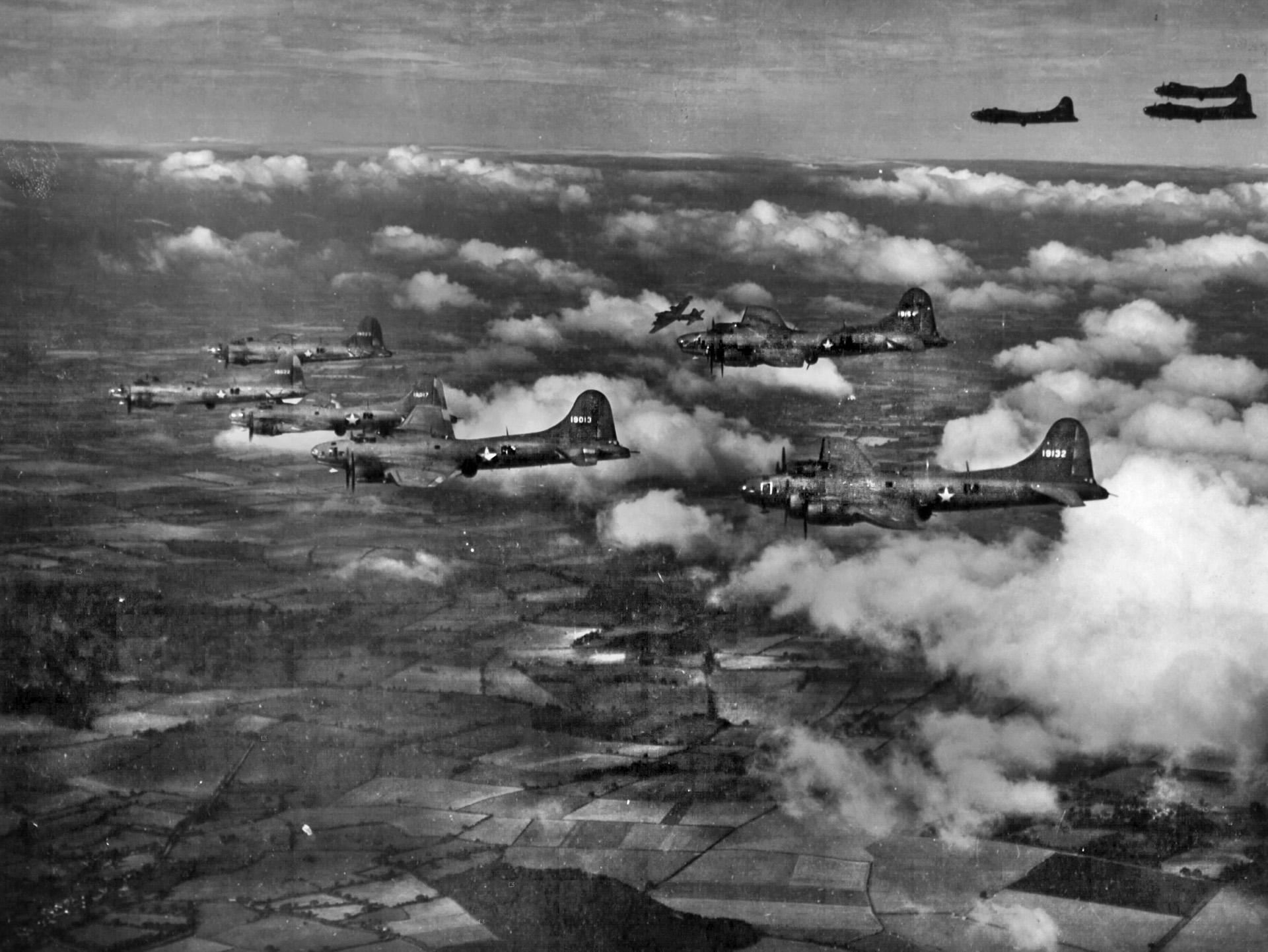
He went through the 1st Officers Training Camp and was commissioned a second lieutenant in the Infantry Reserve on August 15, 1917. Three months later, he was transferred to the aviation section of the Signal Corps to undergo flying instruction at Austin and Kelly Field in Texas. He started flying in 1918, and became a fighter pilot. He was promoted to first lieutenant in October that year, and gained his pilot’s wings in 1919.
After serving at Rockwell Field, California, and Fort Mills and Camp Stotsenburg in the Philippines, the ambitious Eaker, now a captain, commanded Mitchel Field in Long Island, New York, and studied law at Columbia University. He then went to Washington as executive assistant in the office of the chief of the U.S. Air Service and remained there until October 1926. While serving on the air staff, Eaker assisted in Colonel William “Billy” Mitchell’s defense at his historic court-martial in December 1925.
Seconded from active duty in November 1926, Eaker went to South America as second-in-command of a Pan American Airways goodwill flight. He piloted one of the planes that covered 22,065 miles from December 21, 1926, to May 2, 1927, and was awarded the Distinguished Flying Cross for “initiative, resourcefulness, tireless energy, sound judgment, and personal courage.” On his return, he served as operations and line-maintenance officer at Bolling Field in Washington, D.C.
While there, Captain Eaker was detached for a special army flight that made aviation history on January 1-7, 1929. He was the chief pilot of a tri-motored Fokker C-2A monoplane named Question Mark which stayed aloft over Los Angeles, California, for 150 hours and 40 minutes, establishing a refueling endurance record. Refueled 43 times, the Fokker flew 11,000 miles in a circle over Los Angeles. Major Carl Spaatz was one of the pilots. For the feat, Eaker was awarded an oakleaf to his DFC.
A pioneer of in-flight refueling, Eaker made the first transcontinental flight—while being refueled in the air—in 1930, Promoted to major in 1935, Eaker had become one of the ablest and most respected officers in the Army Air Corps. Eaker again made aviation headlines in 1936 by making the first “blind” transcontinental flight from New York to Los Angeles. His plane was hooded over, and he was guided only by instruments. It was while at the AAC and Army schools that Major Eaker—known for his intellect as much as for his flying skill and courage—wrote the first of three much-praised books with General Arnold. These were This Flying Game (1936), Winged Warfare (1941), and Army Flyer (1942).
Eaker briefly led the 20th Pursuit Group at Hamilton Field, California, and was promoted to colonel. He got his first look at war in August-September 1941, when he was ordered to England as a special observer. Eaker returned home to serve briefly at Mitchel Field. Then he was promoted to brigadier general in January 1942 and designated as commanding general of the U.S. Bomber Command (later the Eighth Bomber Command). He was chosen by his friends, Generals Arnold and Spaatz.
Eaker went back to England that February, this time to study British bombing operations and start organizing the complementary American effort. He soon established good relations with British war leaders, particularly Prime Minister Churchill and Air Chief Marshals Harris and Charles Portal.
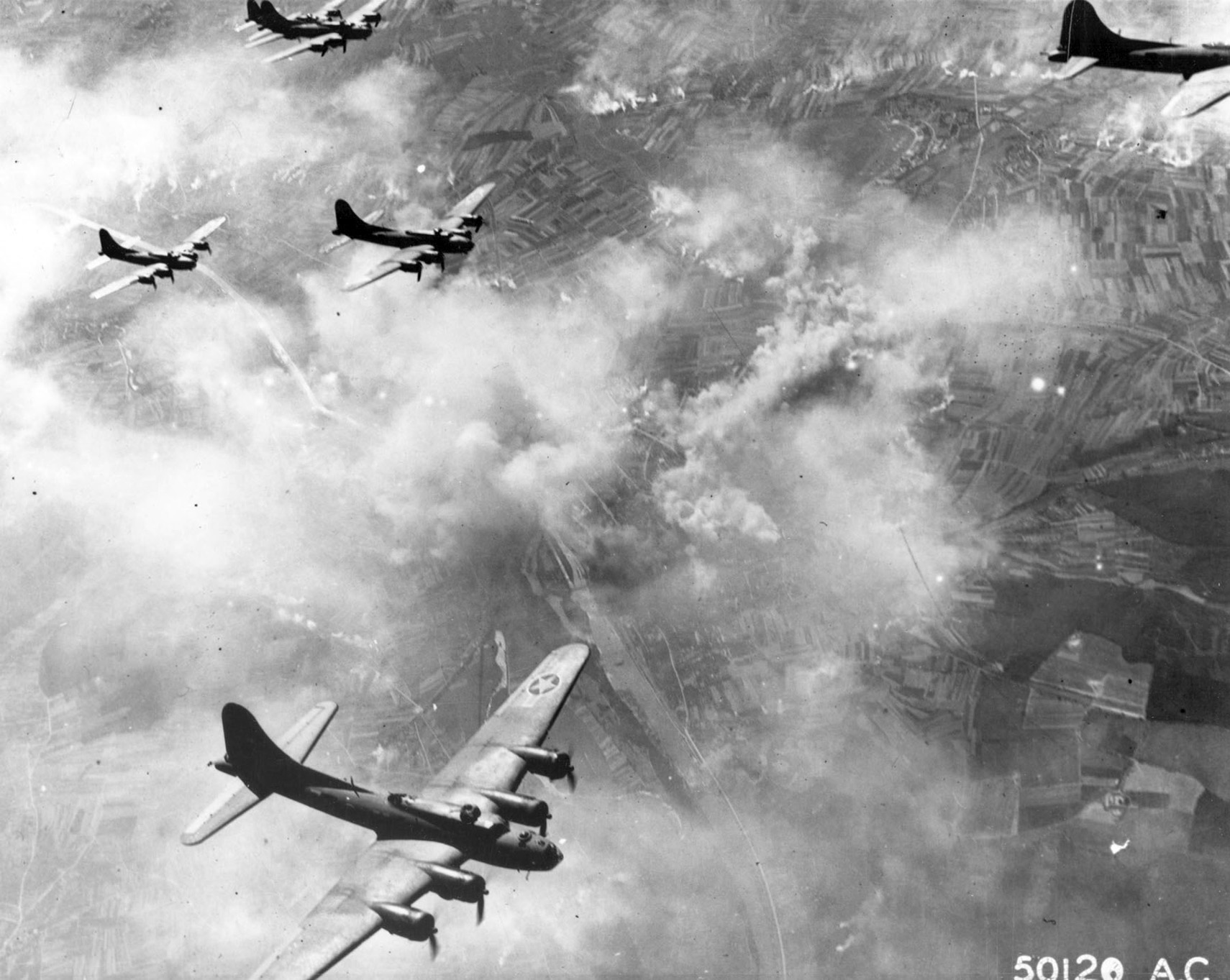
General Eaker led the Eighth Bomber Command during its earliest, darkest months, agonizing over losses and frustrated by the slow arrival of replacement aircraft and crews. He retained command until December 1942, when he took over from General Spaatz as chief of the Eighth Air Force. Spaatz went to North Africa as the Allied air commander. Eaker was by now a major general (temporary).
Like Mitchell, Harris, and some other advocates of air power, Eaker believed incorrectly that the enemy could be defeated by a bombing campaign alone. He told British reporters in September 1942, “There are enough airdromes now built and building [sic] to accommodate all the Allied air forces needed for the destruction of Germany. I believe it is possible to destroy the enemy from the air. By destroying his aircraft factories, you can put an end to his air force. By destroying his munitions plants and communications, you can make it impossible for him to build submarines. There is nothing that can be destroyed by gunfire that cannot be destroyed by bombs.”
By 1943, Eaker had done a herculean job of building the Eighth Air Force from scratch to a formidable force of 185,000 men and 4,000 airplanes. With the Americans bombing by day and RAF Bomber Command raiding nightly, the Allied aerial offensive was a round-the-clock operation, giving German cities and industry no respite.
But forces destined for the “Mighty Eighth” were diverted elsewhere, and Arnold became impatient with Eaker’s results and progress. Effectiveness improved with time and much-needed resources, but in January 1944, Spaatz returned to England to head the U.S. Strategic Air Forces in Europe, and Lt. Gen. James H. Doolittle went with him to replace Eaker as Eighth Air Force commander.
Eaker was promoted to lieutenant general and named to succeed Air Chief Marshal Sir Arthur Tedder as commander-in-chief of the Mediterranean Allied Air Forces (the U.S. 12th and 15th Air Forces and the British Desert and Balkan Air Forces). It was a step up for him, but Eaker was disappointed, believing that he had been unjustly shuffled away from the primary arena of the war. Nevertheless, he stoically directed his air forces through the liberation of Rome, the invasion of southern France, the shuttle missions to Russia, and raids on southern Germany and the Ploesti oilfields in Romania.
Eaker spent the rest of the war in the Mediterranean theater. He was appointed deputy commander of the Army Air Forces and chief of the Air Staff in April 1945, and retired with the grade of major general on August 31, 1947. In June 1948, he was promoted to lieutenant general on the retired list.
After leaving the service, Eaker held several posts in the aerospace industry. He was a vice president of Hughes Tool Co. from 1947-57, a vice president and director of Douglas Aircraft Corp. from 1957-61, and chairman of Hughes Aircraft Co. from 1961. He was inducted into the Aviation Hall of Fame in Dayton, Ohio, in 1970. Eaker also found time to write a syndicated column that was carried in more than 180 newspapers and founded the Strategic Review, published by the U.S. Strategic Institute. In 1978, he was awarded a special Congressional Gold Medal in recognition of his contributions to aviation.
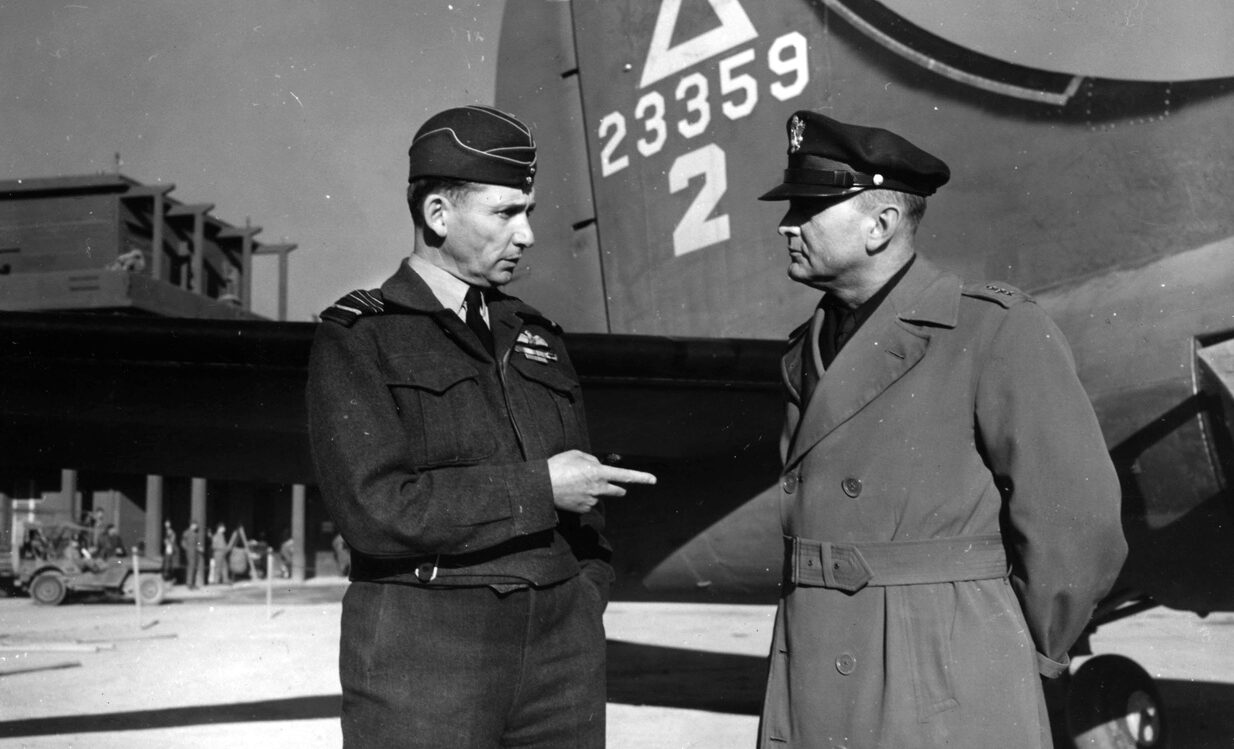
During a ceremony at the Defense Department on April 26, 1985, Eaker was promoted to full general by presidential direction and Senate consent. His fourth star was pinned on him by his wife, Ruth. General Charles A. Gabriel, the Air Force chief of staff, declared, “Few men can equal General Eaker’s great stature as an air pioneer. We owe him our gratitude for his outstanding contributions to the Air Force and the nation.”
An official Air Force statement read, “During a lifetime of service to his country, General Eaker has been an air-power pioneer, a proven combat commander, a successful postwar planner, and an articulate spokesman for a strong national defense.”
The gallant aerial warrior died on August 6, 1987, and was buried with full honors at Arlington National Cemetery.
The late Michael D. Hull was a frequent contributor to WWII History on a variety of military topics. He resided in Enfield, Connecticut.
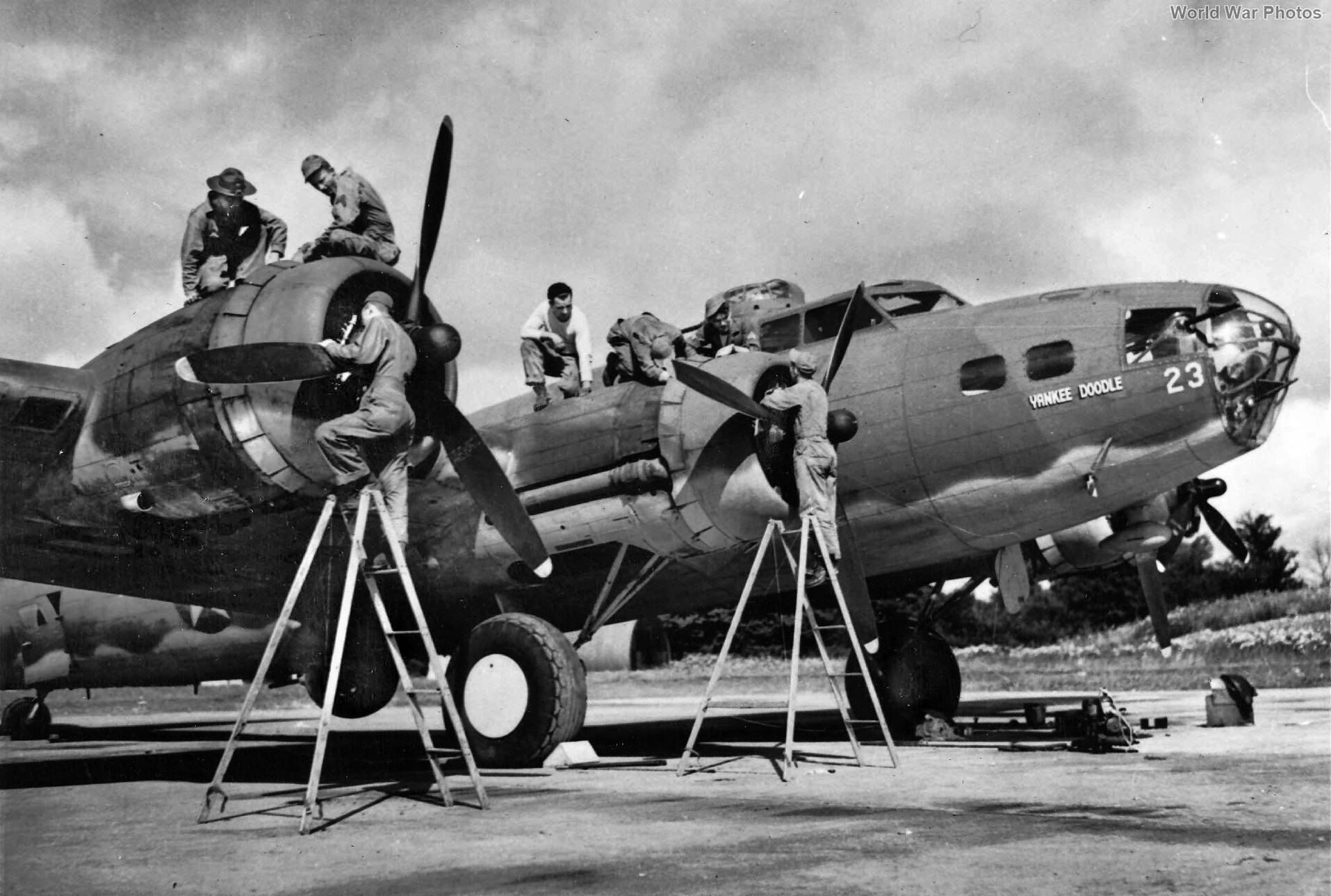
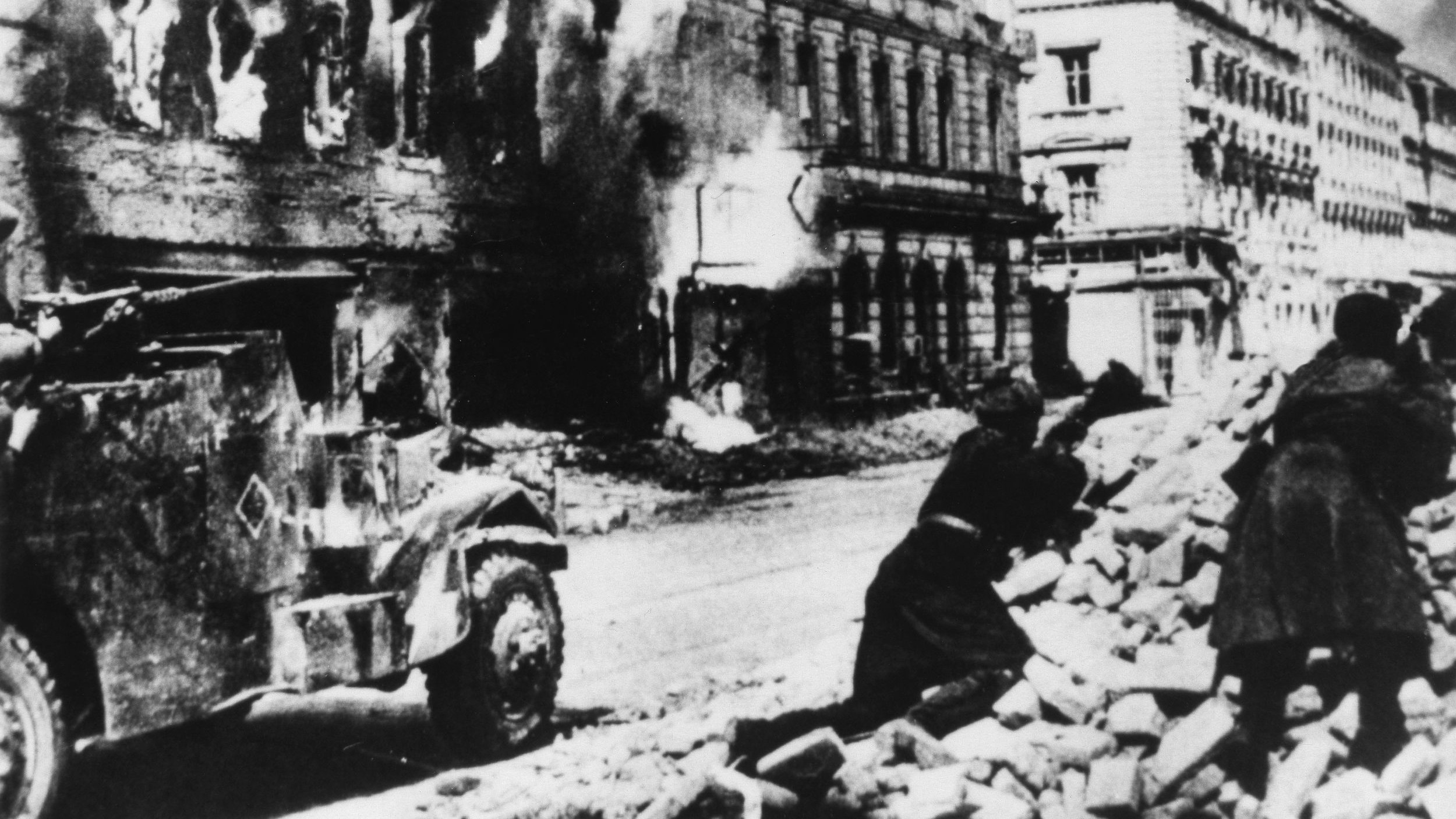
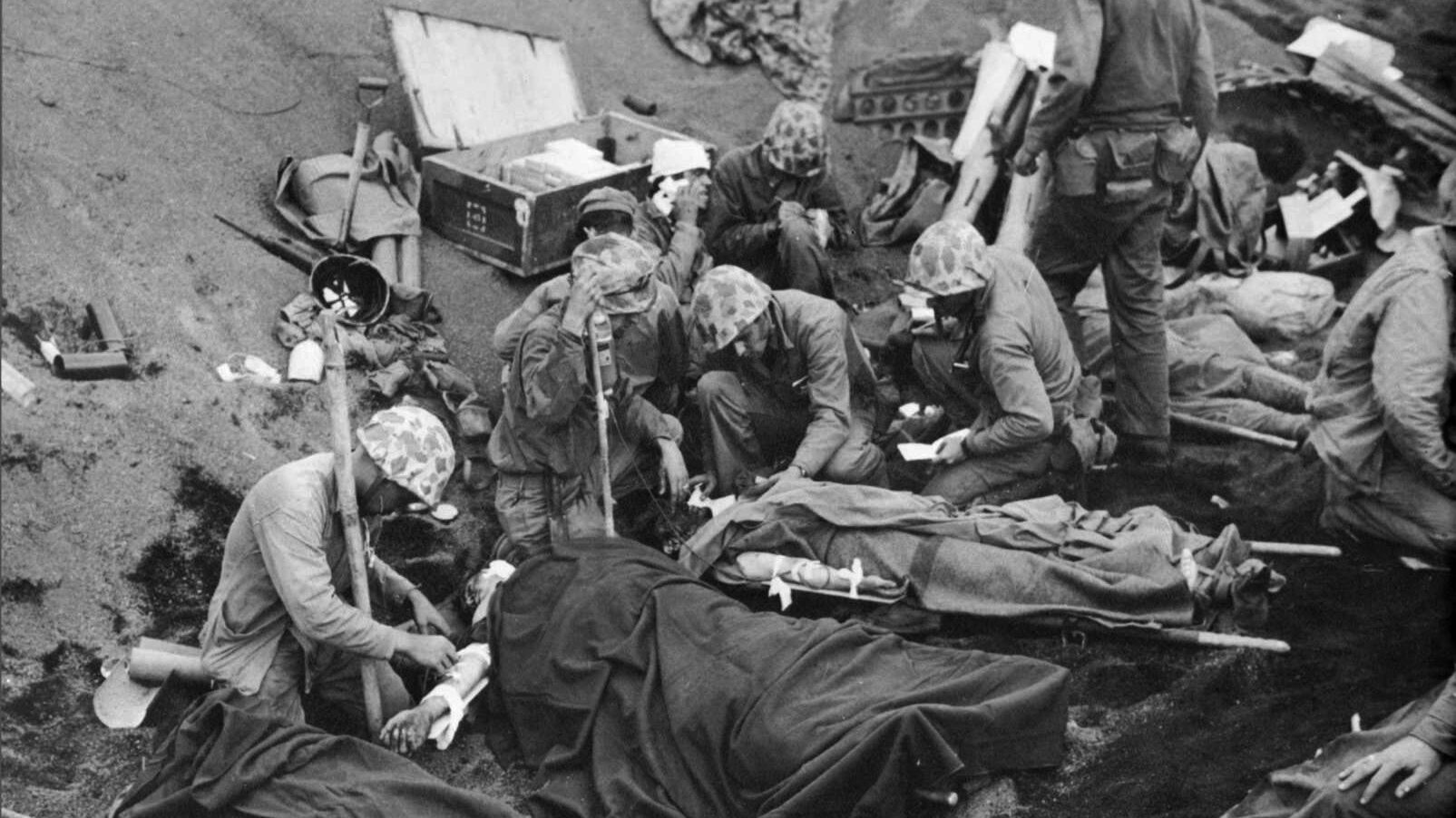
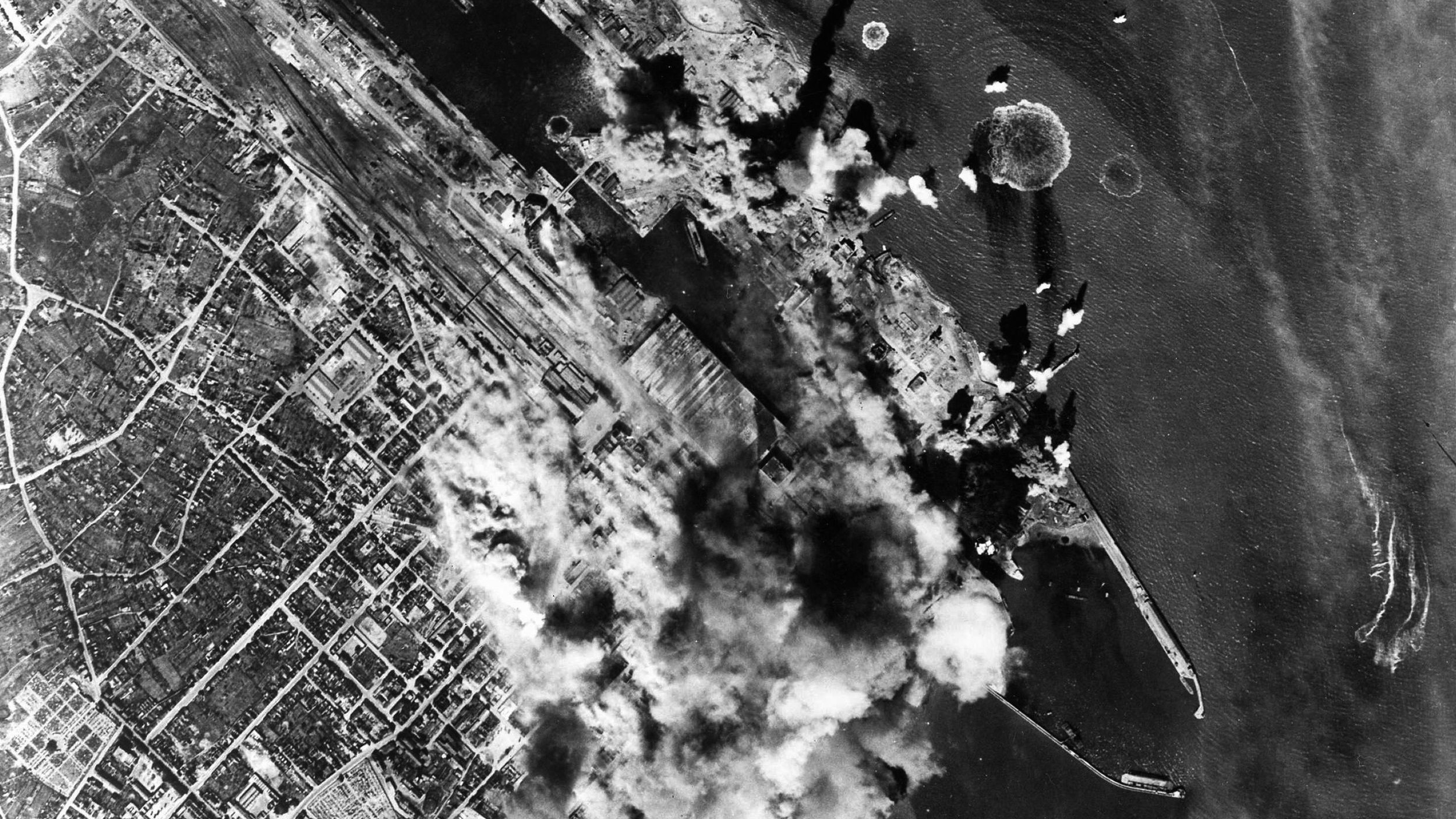
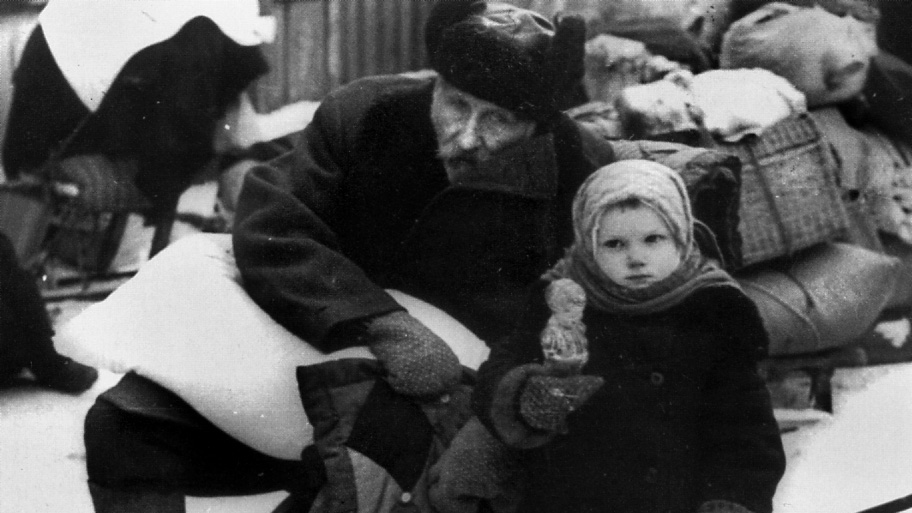
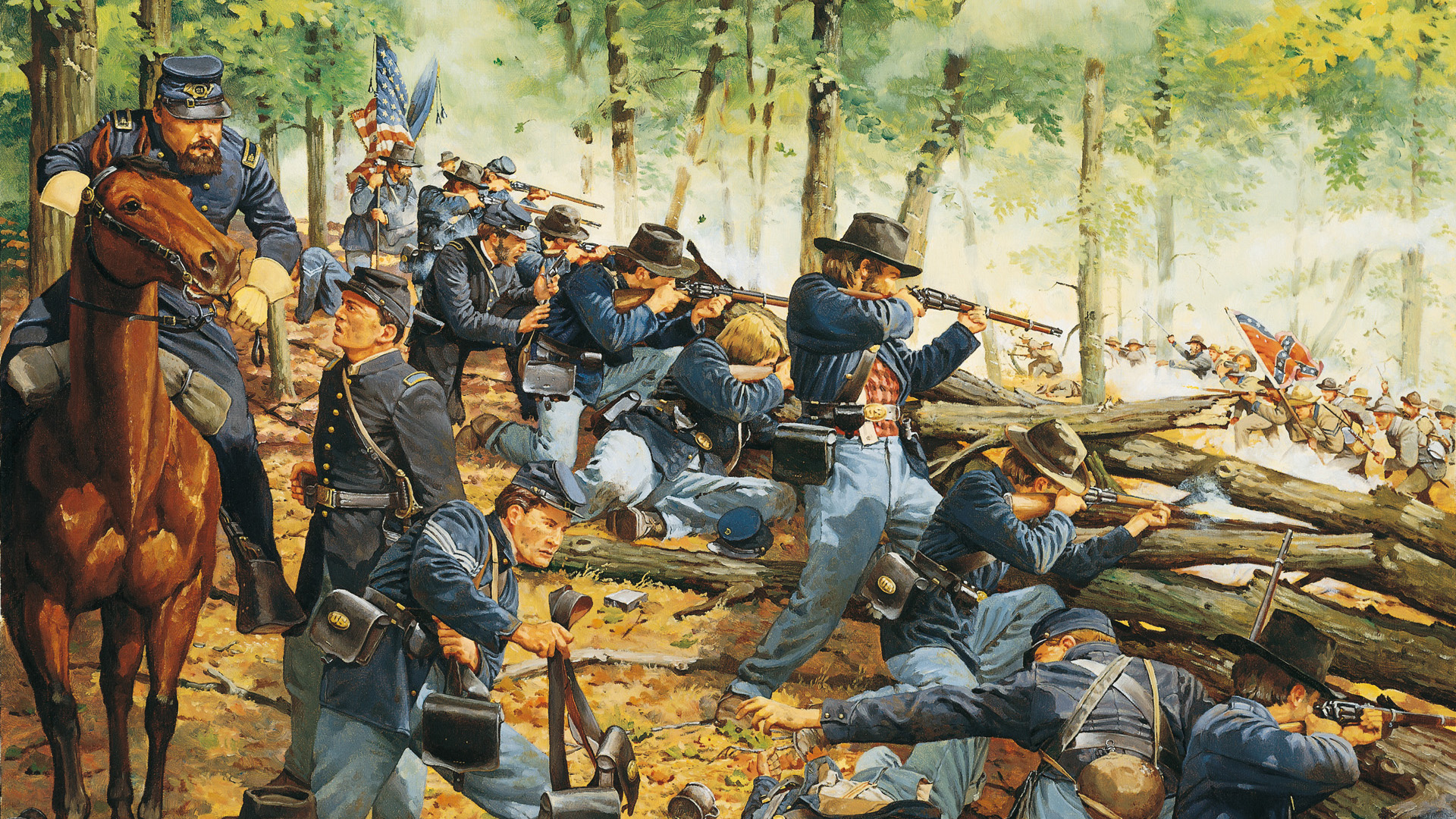
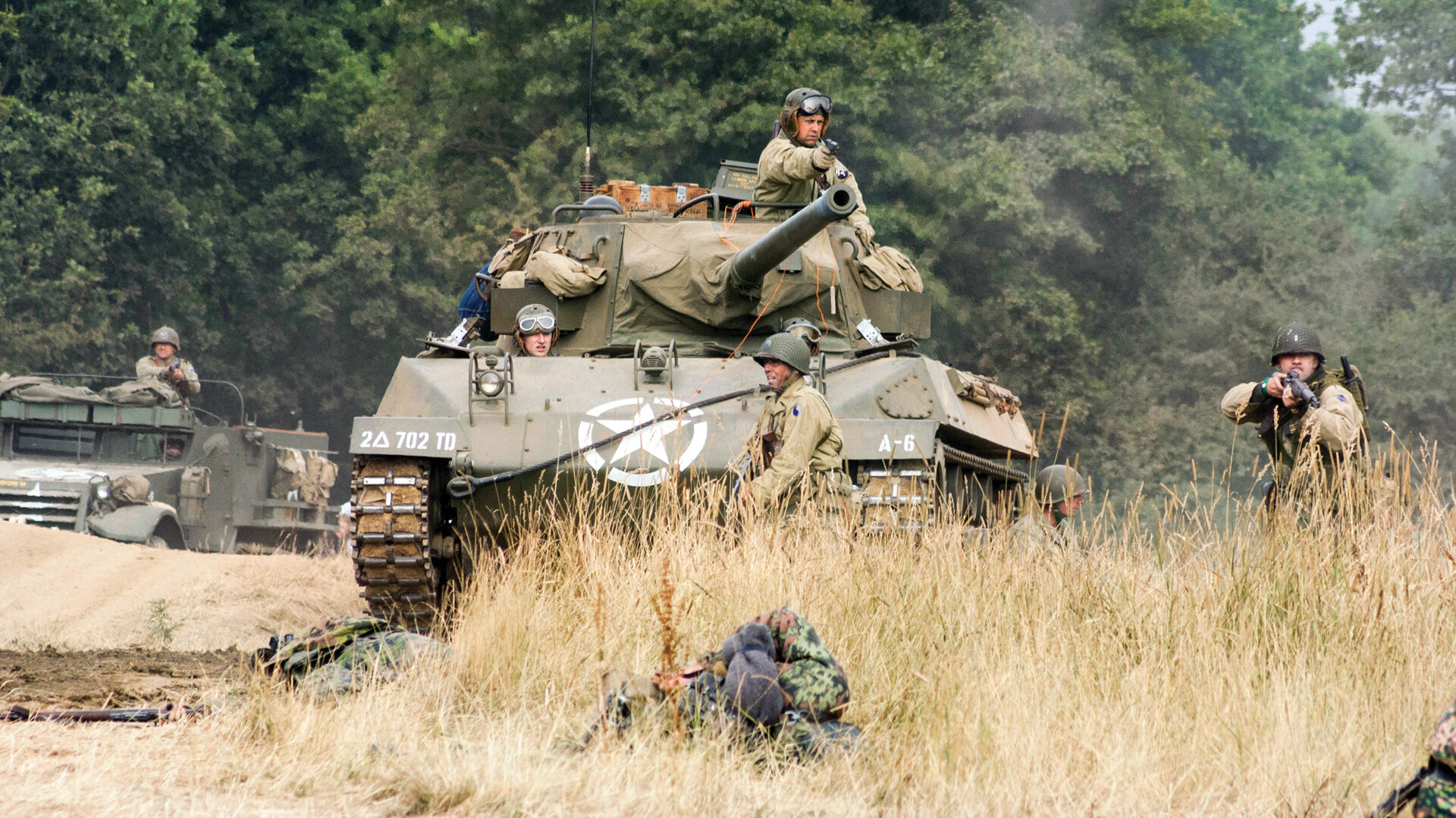
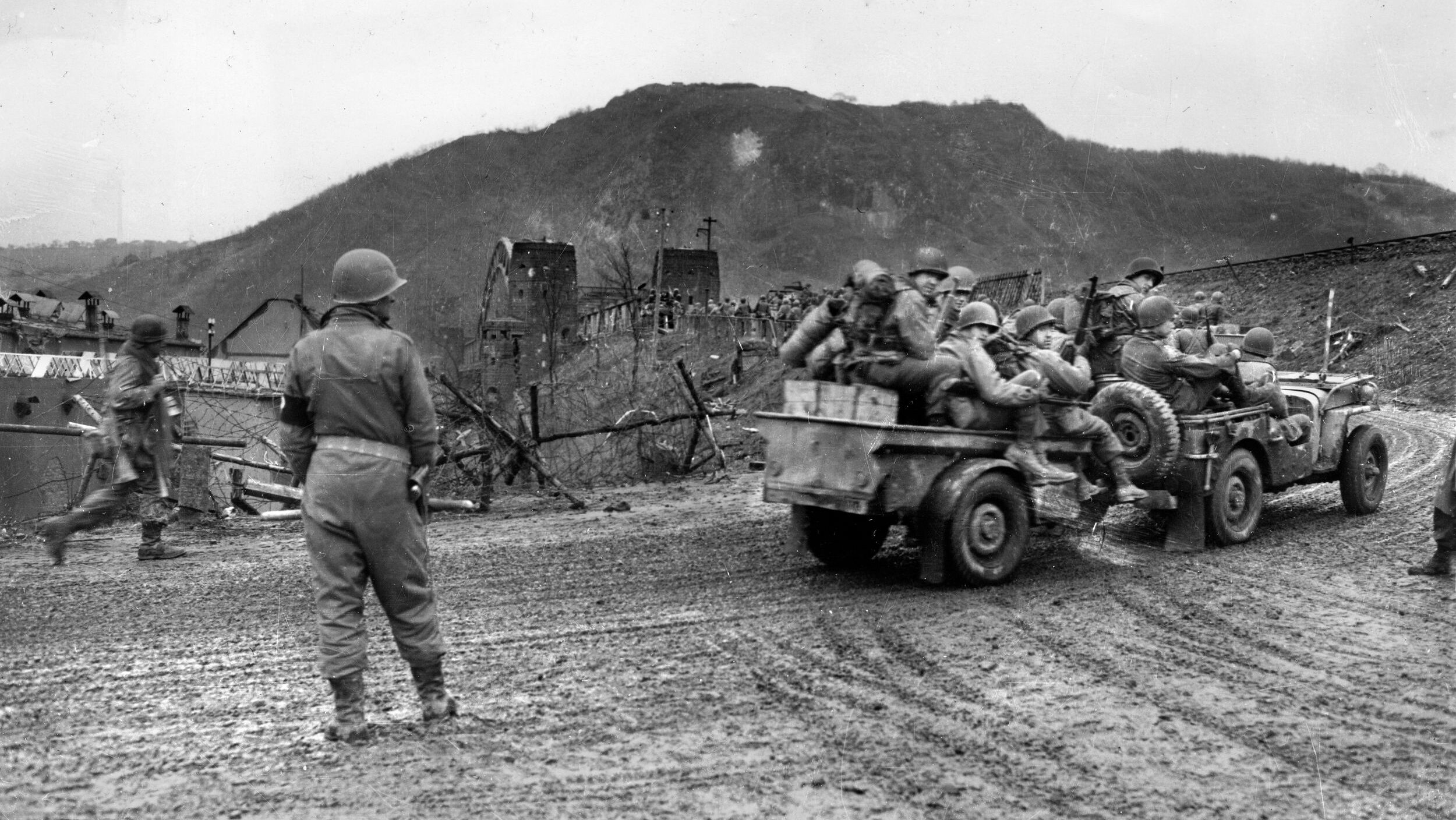
Join The Conversation
Comments
View All Comments